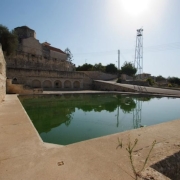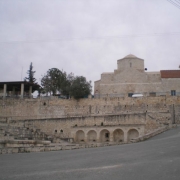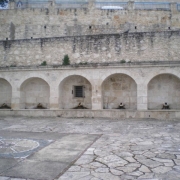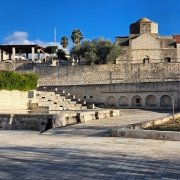The three traditional fountains of Lysos are an important part of the cultural heritage of the village and have a special historical and aesthetic value. Each of them has its own identity and history:
The Great Fountain
It is located under the village church and is considered the most emblematic. Built with traditional stone architecture, it was for decades the main water supply point for the residents, it was built in 1942 and was a vital part of everyday life for decades.
It was for years a vital point in the daily life of the residents. From it they carried water for the needs of the house, washed their clothes, watered their gardens and quenched their animals. It was a place of meeting, communication, cooperation and mutual assistance.
With respect for the history of the place, the space was renovated and acquired a new life. A playground was created next to the fountain, while the entire area is now a place of recreation and joy for young and old. Cultural events, festivals and moments that unite tradition with the modern life of the village are hosted here.
The Great Lake remains alive, a place where the past meets the present.
Lake of Arkoloou
The quiet sister of the Great Lake
Built in 1942, next to the Great Fountain, Lake of Arkoloou was created as a natural extension of the main lake. Its purpose was to collect the additional quantities of water that gushed out from the area. The two lakes communicate with each other by an underground pipeline, creating a single water supply system for the community.
Lake of Arkoloou complemented the function of the Great Fountain, ensuring that precious water was not wasted. Its name, traditional and characteristic, probably comes from a nickname or toponym that was lost in the depths of time.
Today, the area remains calm and welcoming, ideal for those who want to discover the unseen corners of Lysos and feel the connection with nature and the history of the place.
Waterfall Lake
In the Lower Neighborhood of Lysos, nature paints a unique landscape. After rains, the water seems to fall from the rocks behind, forming a natural waterfall, giving life to the landscape and perhaps the name “Waterfall Lake”. The area is rich in flora and is a refuge for birds and small animals.
An ideal spot for exploration, photography and absolute tranquillity.







